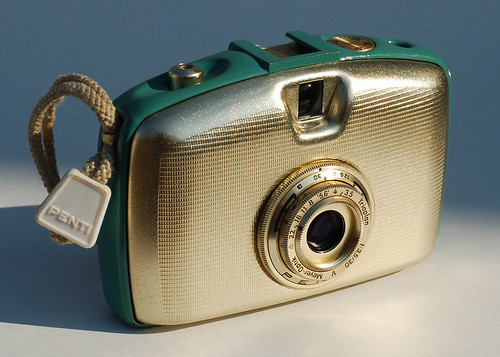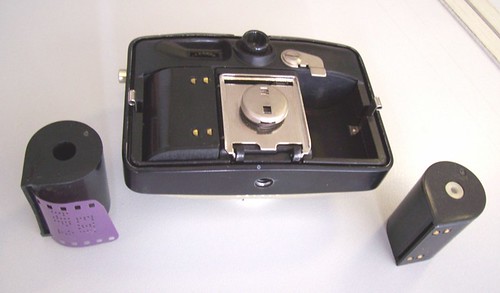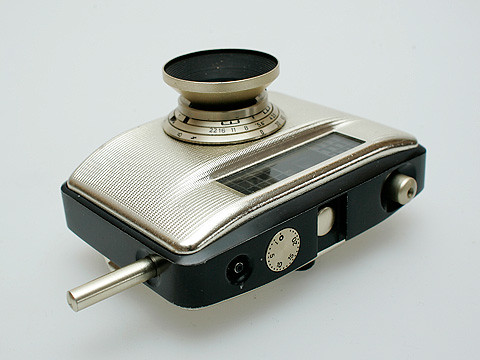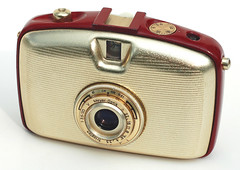Difference between revisions of "Penti"
m (link) |
(→Links) |
||
| Line 81: | Line 81: | ||
* [http://corsopolaris.net/supercameras/half/halformat1s.html Half Format Cameras 135] on [http://corsopolaris.net/supercameras/ Massimo Bertacchi's Innovative Cameras page] has all three Pentis | * [http://corsopolaris.net/supercameras/half/halformat1s.html Half Format Cameras 135] on [http://corsopolaris.net/supercameras/ Massimo Bertacchi's Innovative Cameras page] has all three Pentis | ||
* [http://www.collection-appareils.fr/x/html/page_standard.php?id_appareil=10047 Penti], [http://www.collection-appareils.fr/x/html/page_standard.php?id_appareil=970 Penti II] on [http://www.collection-appareils.fr/general/html/francais.php www.collection-appareils.fr] by Sylvain Halgand | * [http://www.collection-appareils.fr/x/html/page_standard.php?id_appareil=10047 Penti], [http://www.collection-appareils.fr/x/html/page_standard.php?id_appareil=970 Penti II] on [http://www.collection-appareils.fr/general/html/francais.php www.collection-appareils.fr] by Sylvain Halgand | ||
| + | * JM Burtscher sovietcamera website: [http://www.sovietcamera.fr/ Sovietcamera french website] | ||
| + | {{compact classic}} | ||
| − | |||
| − | |||
[[Category: P]] | [[Category: P]] | ||
[[Category:SL-System]] | [[Category:SL-System]] | ||
Revision as of 02:38, 16 March 2013
| ||
|

|
| Blue Penti with Meyer Trioplan 30mm f3.5 lens image by John Kratz (Image rights) |
The Penti was made in East Germany by Welta from c.1959. It was available with a white, red , black or blue body.
The East German optical industry had introduced a 35mm film load system based on Agfa's West German Rapid film. This SL-System (SL-System=Schnell-Lade-System : Fast Load System) used two equal cartridges, one loaded, the other empty. The film advance system shifted the film via the image plane from one cartridge into the other, image by image.

|
| SL film cartridges and black Penti's camera back opened showing advance button pushed in on the left. image by Uwe Kulick (Image rights) |
The Penti, designed by Walter Hennig and first introduced in 1958 as Welta Orix, may have been the finest compact camera for the SL film load system. This was a viewfinder camera with a complete set of manual controls, all in rings around the lens: One for distance, one for aperture, and one for shutter speed. It could make 24 18×24mm exposures on one strip of 35mm film. There was a 1:3.5/30 lens, a Meyer Domiplan or a Meyer Trioplan, and a flash synchronized leaf shutter (the synchronisation was adjusted for bulb flashes only!).
The Penti's most unusual feature was the long film advance button. Once pushed into the camera the film was advanced to the next frame. After exposure the button appeared again in full length so that forgetting film advance was never an issue with this camera. Voigtländer's Vitessa had a similar feature.

|
| Penti II - with meter, showing advance plunger image by Siim Vahur (Image rights) |

|
| Penti I - in spite of its appearance, the camera has no exposure meter. image by Uwe Kulick (Image rights) |
In 1961 the Penti II was introduced by Pentacon's predecessor VEB Kinowerke. This version made it a real classic, combining the uniquely designed full featured viewfinder camera with viewfinder-controlled coupled match-needle selenium meter. It was produced until 1977.
The Penti I was similar to the II, but without the meter. Both cameras are nearly identical externally - the Penti I still has fake "exposure meter" windows on both side of the viewfinder - so they can be easily confused. The Penti II bears however the "PENTI II" name below the lens. Both the Penti I and II could synchronise a bulb flash at 1/30 s and an electronic flash at any shutter speed. After the Penti I and II were introduced, the original Penti was sometimes called the Penti 0.
Links
- Welta Penti and Penti II at Kurt Tauber's [1]
- manual in German
- Penti II at Optiksammlung [2]
- Half Format Cameras 135 on Massimo Bertacchi's Innovative Cameras page has all three Pentis
- Penti, Penti II on www.collection-appareils.fr by Sylvain Halgand
- JM Burtscher sovietcamera website: Sovietcamera french website
| Classic Compact Cameras |
|---|
| Canon IXUS | Minox 35 | Olympus XA | Penti |

